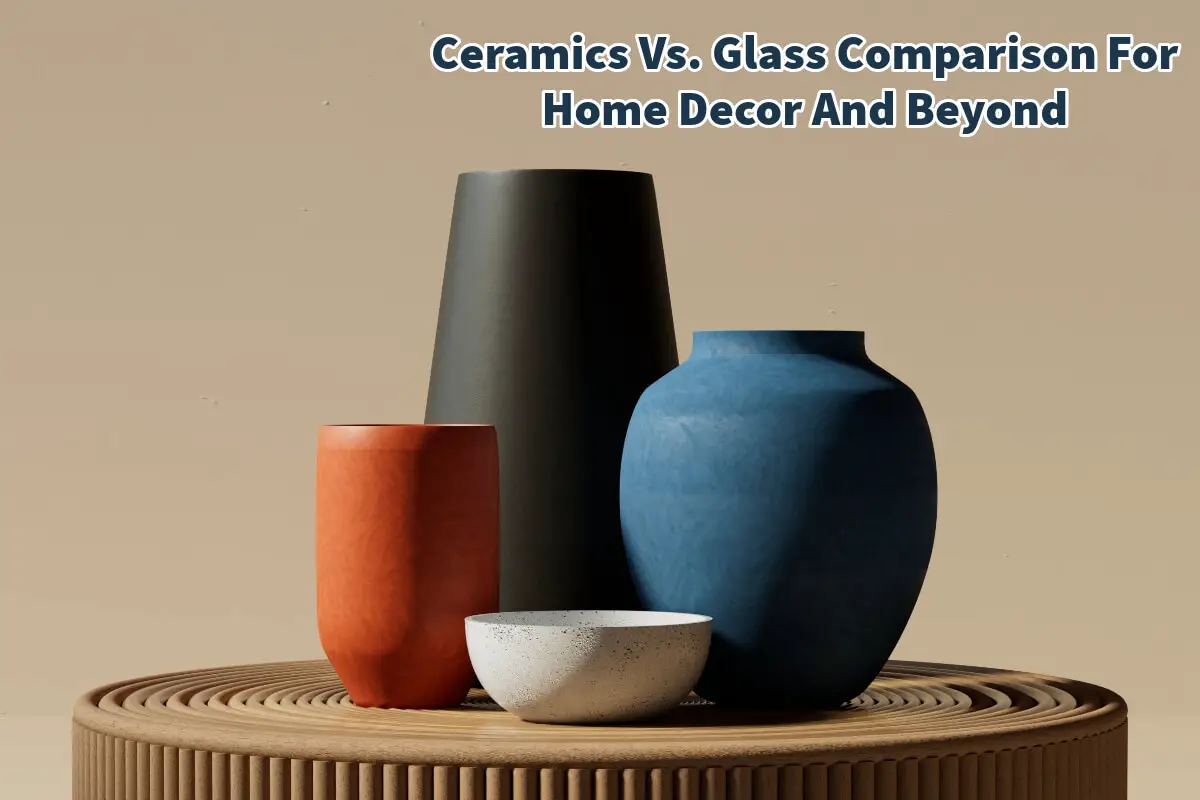Though commonly seen in home décor, art, and building designs, ceramics and glass are far from interchangeable.
Ceramics and glass may share qualities like durability and chemical resistance, but these materials diverge significantly in their makeup, structural attributes, and uses. If you’re considering a home makeover, searching for decorative items, or just intrigued by the variety of materials in your environment, gaining insights into the unique characteristics of ceramics and glass can be enlightening.
Table of Contents
- Ceramics Vs. Glass: An In-Depth Comparison For Home Décor And Beyond
- What Are Ceramics And Glass?
- The Core Differences Between Ceramics And Glass
- Applications Beyond Home Décor For Ceramics And Glass
- Frequently Asked Questions
- Related Content
Ceramics Vs. Glass: An In-Depth Comparison For Home Décor And Beyond
Ceramics and glass are staples in home décor, art, and architecture, but they are different. While they share some properties like strength and chemical inertness, the two materials are distinct in composition, structure, and applications.
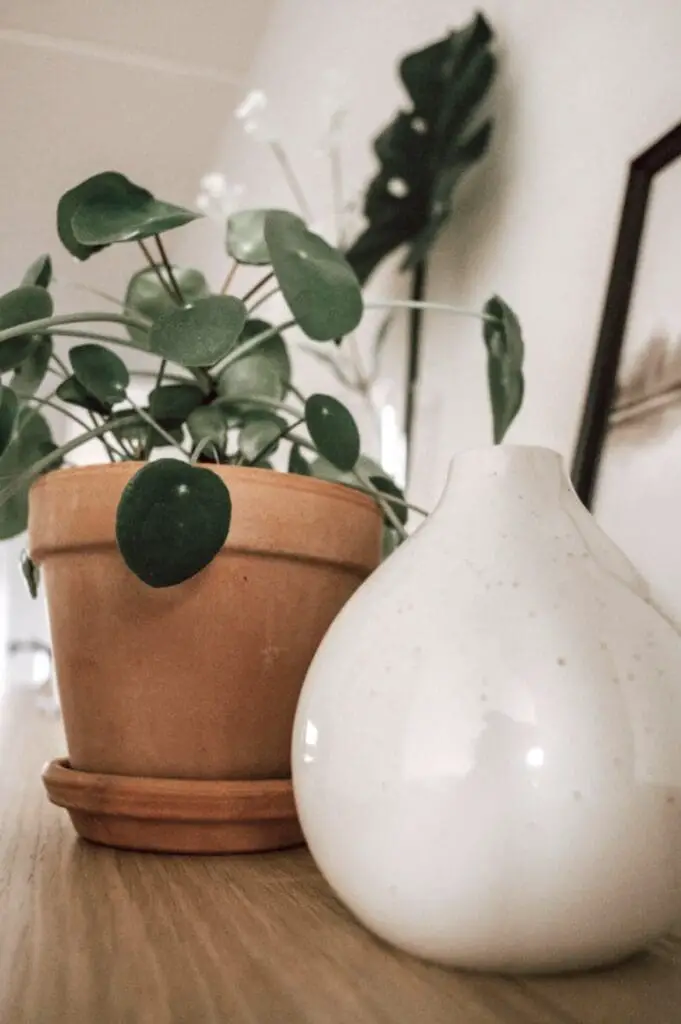
Whether planning a home renovation, shopping for décor, or simply curious about the materials surrounding you, understanding the differences between ceramics and glass can offer a fresh perspective.
What Are Ceramics And Glass?
Ceramic and glass may seem similar, but there are some differences. Read on as we explore more about ceramics and glass.
Ceramics
Derived from the Greek word ‘keramikos,’ which translates to ‘pottery,’ ceramics are non-metallic, inorganic compounds. They can be either crystalline, partly crystalline, or amorphous, like glass.
Ceramics are typically made from clay but include other compounds like oxides, nitrides, carbides, and borides.
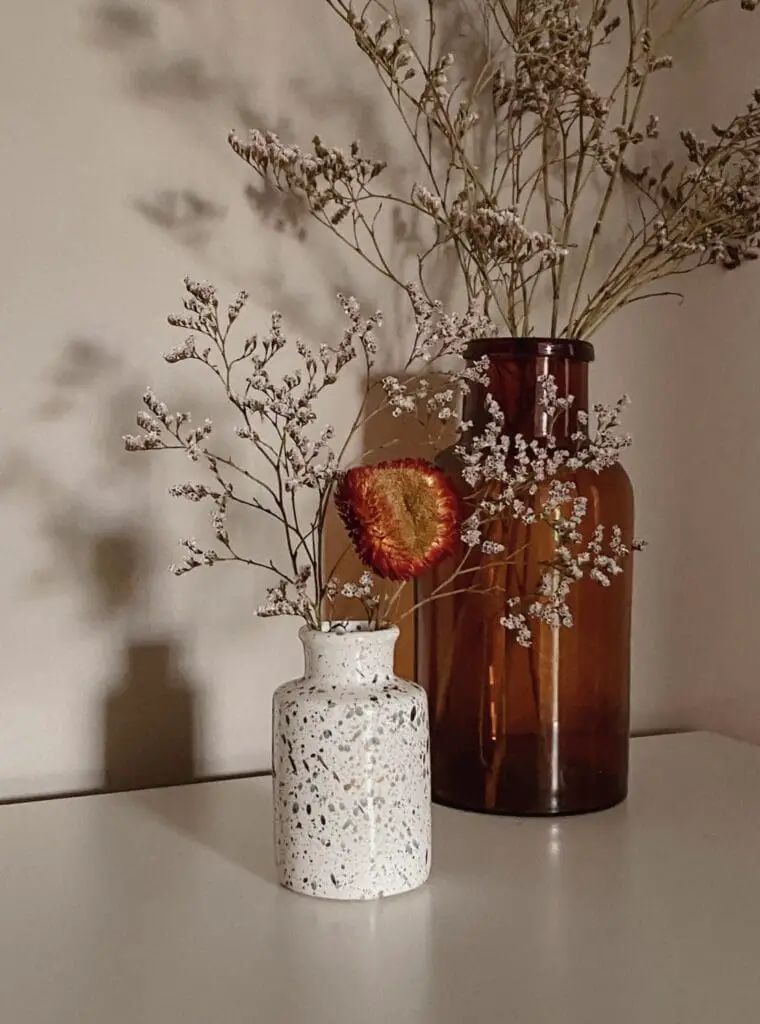
Glass
Unlike ceramics, glass is primarily an amorphous solid, which means it lacks a crystalline structure. Silicon dioxide forms the major glass component, mixed with various metallic silicates.
Though one can argue that glass is a type of ceramic, its unique properties set it apart.
The Core Differences Between Ceramics And Glass
There are some core differences between ceramics and glass. Read on as we explore more about the two materials and their differences.
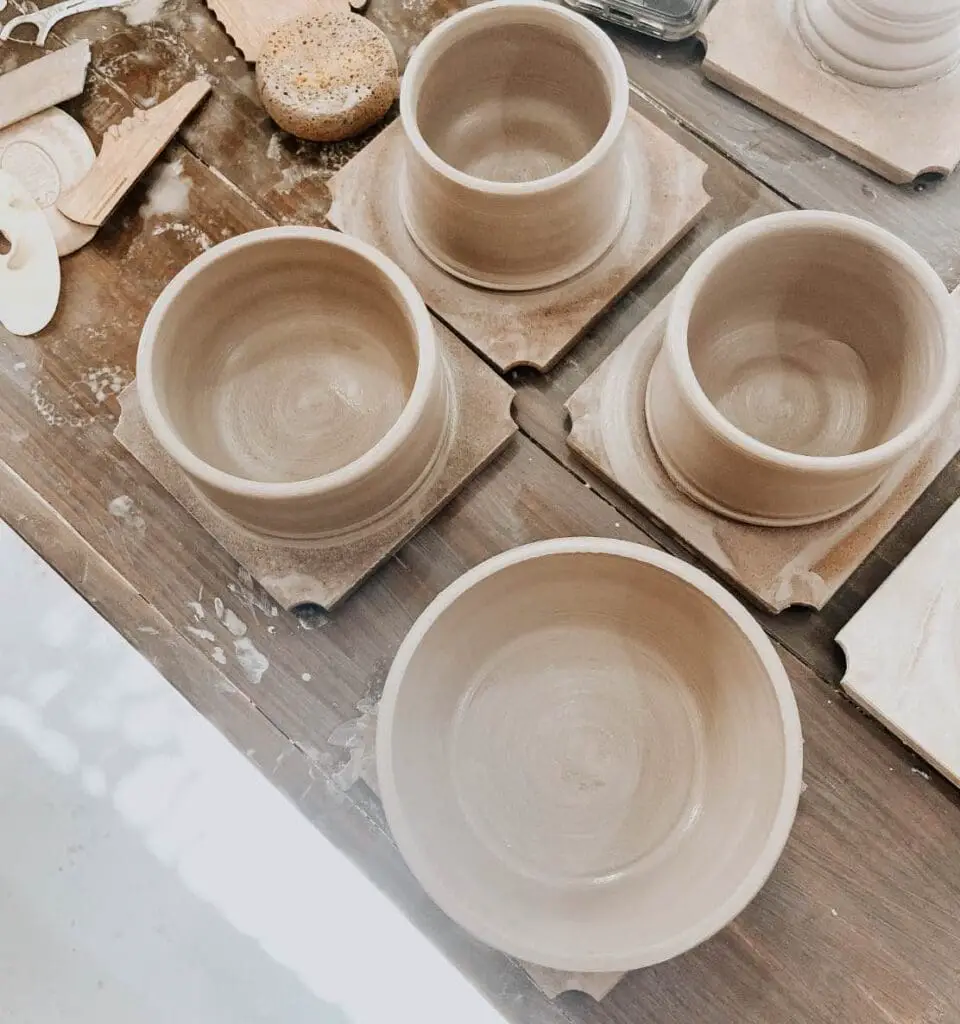
Brittleness Vs. Fragility
Both materials are susceptible to breaking, but ceramics are generally brittle, while glass is fragile. Ceramics excel in compression strength but are weaker in shearing and tension. Glass is fragile and more likely to shatter upon impact.
Thermal Properties
Ceramics can withstand high temperatures but are prone to thermal shock, meaning they can crack when exposed to sudden temperature changes. While not as resistant to high heat, glass generally tolerates gradual temperature changes better than ceramics.
Hardness
In terms of the Mohs scale of hardness, ceramics outperform glass. While the hardness of glass hovers around 6 to 6.5 Mohs, ceramics can go much higher, depending on the type and composition.
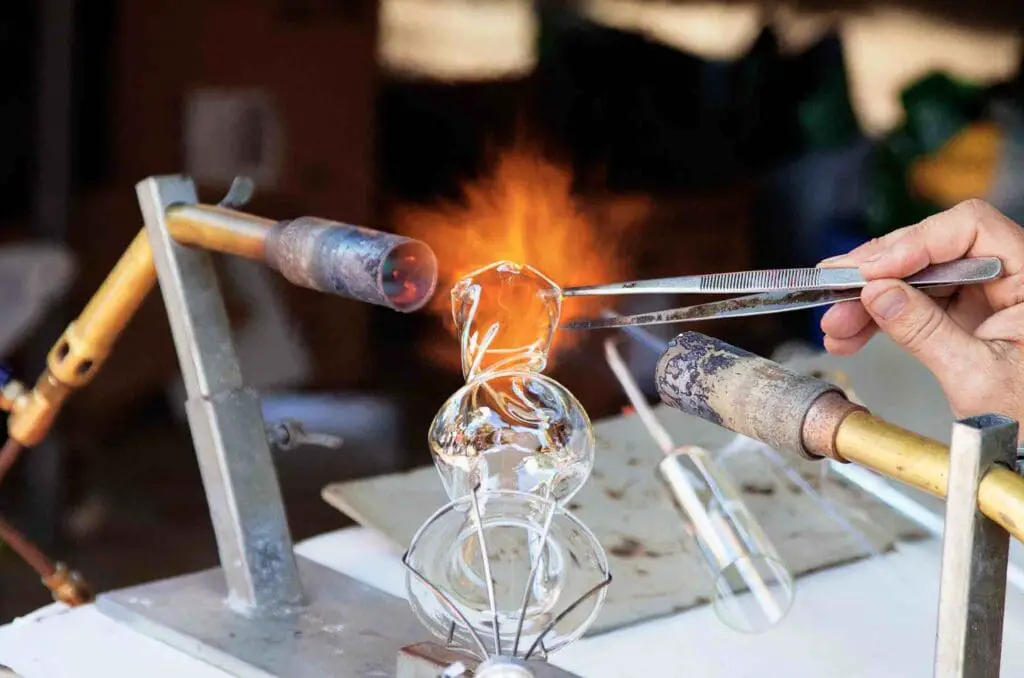
Chemical Resistance
Ceramics usually have better resistance to chemicals, making them ideal for specialized industrial applications where chemical reactivity is a concern.
Light-Transparency
Glass is transparent, allowing light to pass through, which is why it’s widely used for windows, glassware, and optical lenses. Ceramics can be opaque, translucent, or even transparent like glass, but they are generally unclear.
Historical Roots
The history of glass dates back to 3500 BC in Mesopotamia, whereas ceramics have been around for tens of thousands of years, with the earliest known pottery dating back to around 25,000 BC.
Manufacturing
A nuanced difference exists in the manufacturing process. Ceramic kilns typically have heating elements on the sides, whereas glass kilns feature heating elements on the top.
Price
Ceramics tend to be costlier than glass due to the materials used and the manufacturing process involved. But this can depend greatly on what kind of ceramics and glass is used and how it is manufactured.
Applications Beyond Home Décor For Ceramics And Glass
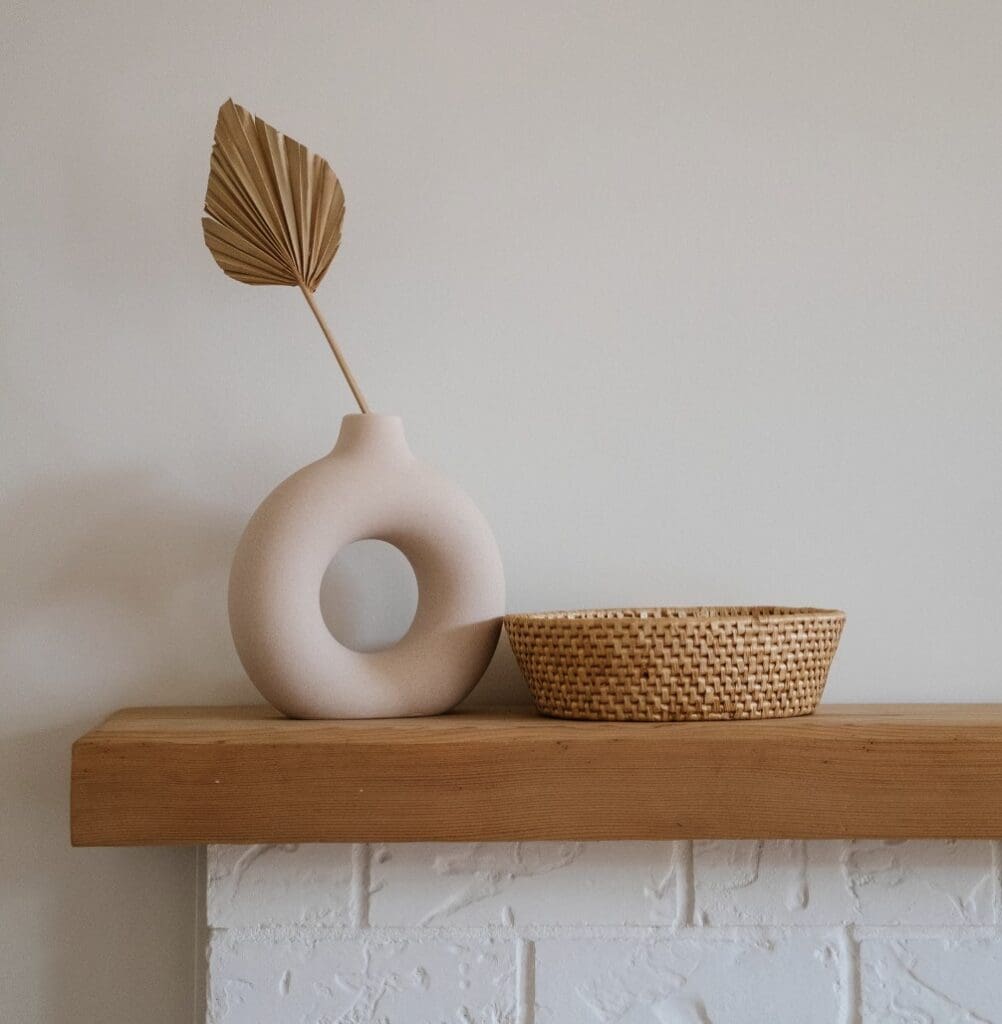
Ceramics and glass are different materials, but each is important for home decor and home furnishing items. Read on as we explore more about home decor and home furnishing items.
In The Kitchen
Ceramics are commonly used for dishes, bowls, and other cookware items, whereas glass is famous for bakeware, measuring cups, and serving platters.
Art And Sculpture
Artists use ceramics and glass to create stunning sculptures and decorative items, each offering unique aesthetic and textural qualities.
Building And Architecture
In construction, ceramics are often found in tiles, bricks, and other structural elements. Glass is predominantly used for windows, facades, and interior partitions.
Technology And Optics
Both materials find applications in technological products: ceramics in electronics and glass in lenses and displays.
While ceramics and glass have overlapping properties and applications, they fundamentally differ in structure, aesthetic appeal, and functional capabilities. Understanding these nuances can guide you in making more informed decisions, whether for home décor, artistic pursuits, or other specialized applications.
We would love to talk to you if you want to see how we can help you with any of your ceramic production.
Find out more about how Mondoro can help you create, develop, and manufacture excellent home decor and furniture products – don’t hesitate to contact me, Anita. Check out my email by clicking here or become a part of our community and join our newsletter by clicking here.
Mondoro gives out a FREE Lookbook to anyone interested. You can receive a copy of our latest Lookbook by clicking here.
Listen to our Podcast called Global Trade Gal. You can find it on all major podcast platforms. Try out to listen to one of our podcasts by clicking here.
Subscribe to our Mondoro Company Limited YouTube Channel filled with great videos and information by clicking here.
Frequently Asked Questions
What is the primary difference between ceramics and glass?
Ceramics are composed of inorganic, non-metallic materials, often clay, and are hardened through heat treatment. Glass, on the other hand, is made from silica, soda ash, and limestone, forming a non-crystalline, transparent substance through melting and rapid cooling.
Which material is more durable, ceramics, or glass?
Both ceramics and glass are durable, but they exhibit different characteristics. Ceramics are hard and resistant to wear but can be brittle. Glass is also hard but may shatter upon significant impact, although tempered or laminated glass enhances its strength.
Are ceramics or glass more versatile in terms of design?
Ceramics are highly versatile and can be molded into intricate shapes, making them suitable for artistic expressions. Glass, known for its sleek and modern aesthetic, can be molded, blown, or fused into diverse shapes, making it popular for contemporary designs.
Which material is more transparent, ceramics, or glass?
Glass is renowned for its transparency, allowing light to pass through and creating a sleek appearance. Ceramics are generally opaque, though they may have a glossy or matte finish depending on the glazing process.
What are common applications for ceramics in home decor and beyond?
Ceramics find applications in various decorative items such as vases and figurines, as well as in building materials like bricks and tiles. They are also used in industrial settings for cutting tools and insulators.
How is glass commonly used in home decor and architecture?
Glass is commonly used for windows, doors, and mirrors in architectural applications. It is also prevalent in the production of tableware, lighting fixtures, and artistic sculptures.
Which material requires less maintenance, ceramics, or glass?
Both ceramics and glass require minimal maintenance. Ceramics are easy to clean and resistant to chemicals. Glass is resistant to scratches and stains, but care should be taken to avoid breakage.
Is either ceramics or glass more environmentally friendly?
Ceramics are often considered more environmentally friendly due to the natural abundance of clay and potential for recycling. Glass is also recyclable, and its reuse does not compromise quality, but the production process may involve high energy consumption.
Can glass be recycled, and how does it impact its sustainability?
Yes, glass is recyclable, and recycling contributes to its sustainability. The material can be melted down and reused without a loss in quality, reducing the environmental impact associated with manufacturing new glass.
Can ceramics and glass be used interchangeably in home decor?
While both ceramics and glass have unique qualities, they are not always interchangeable. The choice depends on the desired aesthetic, functionality, and the specific application in home decor or other settings. Understanding their distinct characteristics can guide informed decision-making.
Related Content
How Does The Firing Temperature Affect Ceramics Production?
If a ceramic piece is not fired at the correct temperature, it will make a huge difference in the final product’s outcome. It is also important that the correct kiln is used for the production process. This is because many things must be considered when using a kiln to fire ceramics. During the firing process, many things can cause the final product to fail or crack.
You can learn more by reading our blog, How Does The Firing Temperature Affect Ceramics Production?, by clicking here.
Ceramics Raw Material From Traditional To Advanced
The fascinating world of ceramics is built upon a rich tapestry of raw materials that have evolved from simple, naturally occurring substances to complex, engineered compounds. These raw materials serve as the foundational elements from which an astounding array of traditional and advanced ceramics are crafted.
You can read our blog on Ceramics Raw Material From Traditional To Advanced by clicking here.
Can You Glaze Pottery Without A Kiln?
To start manufacturing or making pottery, you may want to know if you can glaze or fire pottery without a kiln.
Glazed pottery, stoneware, ceramics, and porcelain must be fired at high temperatures. You need to have a kiln to fire them at these high temperatures. There are several kilns, but the main kilns are electrical kilns, fuel-burning kilns, and gas kilns.
You can learn more by reading our blog, Can You Glaze Pottery Without A Kiln? by clicking here.

